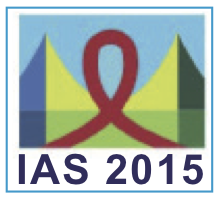Large variation across countries in meeting UNAIDS 90-90-90 targets
1 August 2015. Related: Conference reports, Treatment access, IAS 8th Vancouver 2015.

Polly Clayden, HIV i-Base
Analysis of national treatment cascades showed huge variation in achieving UNAIDS 90-90-90 targets. The proportion of HIV positive people with undetectable viral load ranged from 68% in Switzerland to 9% in Russia. No country analysed met the UNAIDS final target of 73% achieving undetectable viral load.
UNAIDS 90-90-90 targets, set in 2014, aim to diagnose 90% of all HIV positive people, provide ART for 90% of those diagnosed, and 90% of those receiving ART achieve viral suppression, by 2020. Overall this means at least 73% of all HIV positive people should achieve a suppressed viral load.
The analysis compared published estimates of HIV treatment cascades across 19 individual countries and combined data from the sub-Saharan African region. Jacob Levi from Imperial College presented findings on behalf of researchers from Imperial College, London and Cantonal Hospital of St. Gallen, Switzerland at IAS 2015.
The researchers used the most recent UNAIDS data and a systematic review of viral suppression rates to estimate where we are currently and compare this to 90-90-90 targets. This comparison revealed, of an estimated 36.9 million HIV positive people worldwide, 19.8 million (53%) know their status and 13.4 million are undiagnosed. Approximately 15 million (41%) are on ART, with 14.9 million untreated, and 11.6 million (32%) virally suppressed.
The researchers defined the stages in the cascades where the targets are being missed – where more than 10% of people are lost – as breakpoints. “So can the UNAIDS 90-90-90 target be reached?” they asked.
The study included 11 full treatment cascades (percentage and number of people for all three UNAIDS targets reported and the viral suppression cut off used) and nine partial cascades (percentage and numbers for all three UNAIDS targets not reported and does not report viral suppression cut off used). Definitions and estimation methods varied between cascades, for example linkage and retention were defined differently between countries – ranging from attendance at healthcare facilities to blood tests within a given time frame.
The researchers calculated the results for the first target by dividing the number of people diagnosed with HIV by the estimated number of people living with HIV in each country. The calculation is tricky as both numbers are estimated in different ways with different testing procedures in different countries.
Estonia, Australia, USA and Denmark reported 85% or more people with HIV were diagnosed compared to less than 50% in Russia, Columbia and Ukraine (the lowest at 44%). The proportion in the UK was 76% and across the African region it was 51%. Diagnosis was the greatest breakpoint globally and the greatest point of attrition for: Switzerland, UK, the Netherlands, the region of sub-Saharan Africa, Columbia and Ukraine.
Estimates for ART provision – the second target – were calculated from: pharmacy records, governmental drug purchases, and healthcare dispensary records. The researchers did not differentiate between ART regimens. They noted that the thresholds for starting treatment varied between countries and changed within countries.
Providing ART to those diagnosed was the greatest breakpoint for: Australia, Rwanda, Denmark, Brazil, Cuba, US, Estonia, Vietnam, Georgia, Kyrgyzstan and Russia. In the US only 37% of people with HIV received ART although 86% were diagnosed. In Estonia only 29% of people received ART despite having the highest rate of diagnosis of the cascades in this evaluation. Poor ART coverage was seen across all Eastern European countries including: 26% Georgia, 22% Ukraine, 19% Kyrgyzstan and 11% Russia.
Countries also varied enormously in achieving the third target of 73% of all HIV positive people with viral suppression. Only Switzerland, Australia and UK achieved above 60%. Russia only achieved 9%.
For this target UNAIDS defines viral suppression as viral load <1000 copies/mL but some countries use undetectable viral load with various cut offs (<40 to <500 copies/mL), when they define the final target. The researchers noted that the definitions change the final percentage described as successfully treated. This means that the viral load cut off needs to be accounted for when comparing cascades. Brazil, for example, would achieve 35% with a cut off of <50 copies/mL (undetectable) but 40% with <1000 copies/mL (suppressed).
The researchers identified large disparities between countries. Although no country or region analysed so far met the final UNAIDS target, overall Switzerland, Australia, UK, Belgium and the Netherlands were not too far off achieving this – particularly with improvement in diagnosis.
The analysis showed all Western European countries achieved viral suppression for over 50% of HIV positive people. But all Eastern European countries only achieved viral suppression for 20% or less of HIV positive people.
The researchers recommended a standard reporting method should to be implemented to facilitate comparisons between countries to allow breakpoints to be better identified. “Identifying breakpoints allows us to prioritise resources to fix them”, Levi added.
Reference:
Levi J et al. Can the UNAIDS 90-90-90 target be achieved? Analysis of 12 national level HIV treatment cascades. 8th IAS Conference on HIV Pathogenesis, Treatment & Prevention.19-22 July 2015. Vancouver, BC, Canada. Oral abstract MOAD0102. Webcast:

